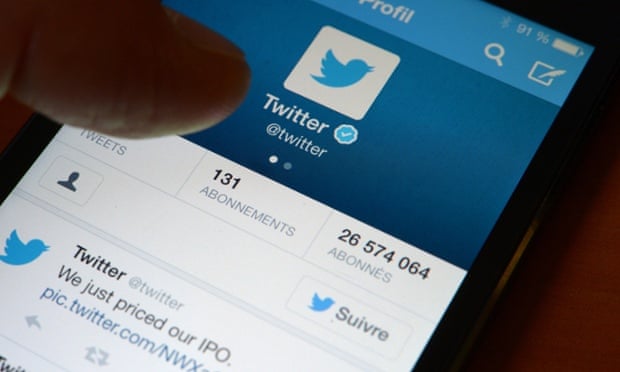How many times have you started reading someone’s LinkedIn summary and found yourself totally bored two sentences in?
The whole thing is only a paragraph, but you’re already scrolling down to the Experience section—or even clicking away from the page.
Having a great summary (like these!) is essential. After all, it’s one of the most important areas of your entire profile: It sums up your professional history, qualifications, and personality.
Plus, it can (and should) give viewers a clear idea of what they should do next — whether that’s accepting your connection request, recruiting you for a job opening, or reaching out for networking purposes.
If you’re looking for inspiration, check out these five different summary templates — there’s one for every kind of person on LinkedIn.
1. The mission-based summary
Every brand has stories to tell — stories that will not only engage, inform, surprise, delight, and impact their audience, but that will also deliver on measurable business goals. And I am the conduit between brand and consumer.
I help clients find the subject and medium that best fits their unique identity, and then I produce high-quality content that meets their objectives.
Currently, I am a content strategist at Alliance Media, where I’ve collaborated with companies such as Tiffany & Co., Burger King, and Netflix.
My specialties include digital media, consumer behavior, brand awareness, and omni-channel marketing campaigns.
The mission-based summary opens with a broad description of what you do, then gets more and more specific. This is a great choice if you’re using LinkedIn to engage with a variety of people. After all, someone who’s unfamiliar with the field is probably hazy on what “content strategy” means — but everyone understands “telling stories for brands.”
It also shows that you get the bigger picture. You understand why your job encompasses more than your daily to-do list. And as you can see, you don’t have to be “increasing literacy rates in third-world countries” or “building prosthetics with near-natural motor capability” to be contributing something valuable to the world.
2. The personality summary
When I was 21, I climbed Mount Everest. Not metaphorically — I literally climbed the highest mountain on Earth.
While I was hiking, I thought about quitting approximately 5,000 times. (And that’s a lowball estimate.) But despite the high winds, low altitude, mental and physical fatigue, and trail mix overdose, I kept going. I’m that person. Once I say I’ll do something, it will happen.
Now, I put that perseverance to work as a senior account manager for Polar. I don’t have to climb any mountains… but I do have to move them.
I’m well-versed in negotiations, planning and development, relationship management, operations, and logistics coordination and scheduling.
If you’re interested in grabbing coffee and talking shop (or to hear how I almost fell off the mountain at 27K feet), please send an email my way.
If you’re really looking to hook people, begin with an anecdote that demonstrates one or two key personality traits.
Because this type of summary focuses more on soft skills than on hard skills, it’s ideal for two types of users: the networkers and the less-experienced. If you’re using LinkedIn primarily to meet new people, rather than get a job, this makes you seem like an interesting person to know. You’ll likely see an increase in the number of connections you make, as well as the number of people who accept your coffee invites.
And it’s also great if you’re still a student or relatively new to the professional world. Instead of being confined to a short, two or three sentence bio explaining what limited experience you have, you can flesh out your character traits to help people learn more about you.
3. The short and sweet summary
I have over 15 years of experience working in data science. Currently, I work as Asana’s Senior Data Manager, improving products and services for our customers by using advanced analytics, standing up big-data analytical tools, creating and maintaining models, and onboarding compelling new data sets.
Previously, I was the Chief Data Scientist at Guru, where I analyzed data from some of the biggest enterprise and networks in the world to educate the market on long-term internet trends.
Competencies: data science, machine learning, cloud computing, Hadoop, Python/Java/R, network protocols
The short and sweet summary is a smart choice for professionals in conservative or technical industries. For example, if you’re a lawyer, you want to make it easy for people to see how long you’ve been practicing law, what your qualifications are, and the type of work you specialize in. (Plus, getting too creative might undermine your credibility.)
This also works for active job hunters. Why? It allows you to get a lot of keywords in, which will help advance you in the search results when a recruiter looks for someone who fits your profile.
Whatever the case, a short and sweet summary should include your current role, previous positions (if they’re relevant or notable), and your skills.
4. The blended summary
I’m a talent acquisition specialist with an interest in building the most effective workforces possible. For over 20 years, I’ve been helping businesses find their perfect hires. I also do consulting on compensation and benefits, new hire processes, and company culture.
When I’m not on the job, I love hiking with my dog, working my way through every recipe in the family cookbook, and indulging my love for seeing new places.
If you’d like to learn more about how my services can help your company, please reach out via email (janedoe@gmail.com).
As the name suggests, this summary is a blend between the personality and the mission versions. It’s perfect if you want to get straight to the facts, but you also want some levity in your description. I’d suggest it for professionals in more creative industries and people whose work involves lots of other people (think sales reps, managers, or HR specialists).
To make this work, begin with your current job and a couple work accomplishments or highlights, then add some “fun facts.” However, make sure they’re not too fun — “I love karaoke (ask me about my Mariah Carey cover)” is fine. “My personal motto is ‘It’s 5 PM somewhere!’” is probably not. When in doubt, leave it out.
If you need more help nailing the perfect tone for this one, just imagine you’re talking to someone you just met at an industry event. Keep it light, fun, and professional.
5. The accomplishments summary
I’m a freelance multi-disciplinary graphic designer who’s delivered creative and engaging solutions across brand identity, print, packaging, and digital media.
In 2013, my online brand campaign for the Dorsey Children’s Hospital won a GDUSA award, one of the most prestigious honors in the graphic design industry.
My work has also been featured in Creative Bloq, Compound Magazine, and on the Creative Review blog.
Skills: logo design, web design, branding and identity, typography, UI design, packaging, CSS, HTML, InDesign, Photoshop, Illustrator
If you have a project I can help with, please get in touch.
I love the accomplishments summary for those who are seeking work — either a full-time position or freelance gigs. It cuts to the chase and tells potential employers or clients exactly why you deserve the job, as well as the (high) caliber of work they can expect from you.
And you’re not limited to awards, speaking engagements, or positive press. Something like “I planned and implemented a new social media strategy that tripled our online engagement in six months” works too.
It doesn’t matter which summary type you choose — having a well-written, thoughtful one will do wonders for your LinkedIn goals.





